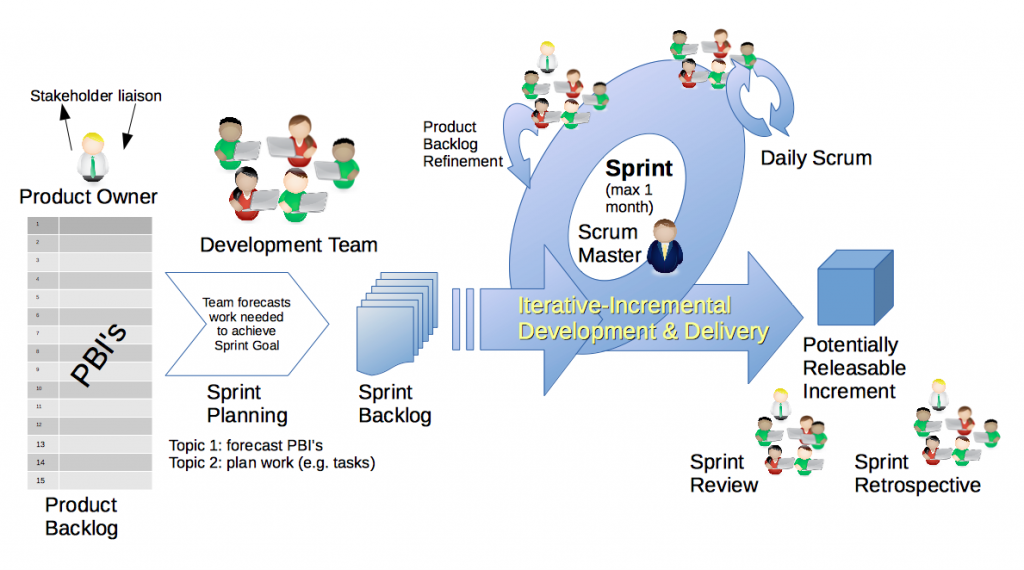
A friend who’s an architect once joked, “My clients want a design that is good, fast, and affordable. I tell them to pick any two. If the design is good and fast, the price will be high. Something good and affordable will take more time. And if you want it fast and cheap, then it won’t be good.”
The same can be said of agile projects. The same three variables are at play: quality, delivery time and cost. Delivery time is fixed by the duration of the sprint. Cost or budget is also relatively fixed based on a stable team and technology. So the only wiggle room is scope. To get high quality deliverables within a fixed sprint, the scope must be right-sized to fit the sprint. Too large of a scope and quality suffers. This requires a shift in mindset but that’s not all.
There is the question of organizational culture and the speed of agile transformation. Agile is a strange animal. It thrives in different cultures dependent on its size and maturity. When it is young and little, think of agile being introduced to one team in IT, it thrives in a bottoms-up culture where the Agile Manifesto rules, teams are empowered by facilitative scrum masters, and decisions are made by the teams.
After some small, low-hanging fruit successes, agile grows from being a child to a teenager. All of IT may want to switch to agile. Other departments want to get a taste of agile success too. This is a difficult time. Agile teams may feel they have demonstrated how to create value for the organization and want to take the lead. Departmental managers, especially those new to agile, may not understand the new methodology but nevertheless, want its quick wins. Here’s where top-down decision-making needs to release some control to agile teams. If this doesn’t happen, agile will most likely fail to take root and may be abandoned by the organization.
Should agile survive the teenage years, then the next level of maturity is to scale it up to the entire organization where all departments embrace it. Another cultural shift is needed here. Scaled agile requires extreme discipline by all players. In other words, a top-down command-and-control culture that also understands agile methodology is what is needed. Bottoms-up decision-making is not going to cut it when scaling agile. Here’s where agile teams may need to give up some level of autonomy. This may be difficult to do if they were the champions who introduced agile to the organization in the first place.
The best case scenario would be for some of these early agile champions to have been promoted into senior leadership in tandem with the growth of agile in the organization. Like the growth of a child to a mature adult, there are key transition points for agile to scale into an organization. Knowing when and where these thresholds are and being appropriately agile when it comes to cultural changes is a key factor in successful agile transformations.
Another approach to agile transformation is to start with an agile mindset first. In a (post?)-pandemic VUCA world, the C-suite is adept at pivoting to survive and leverage new opportunities to thrive. They could start by switching from year long projects (annual sprint) to quarterly projects (3-month sprint). In so doing, they are automatically scoping down project deliverables into smaller chunks. Then they could ask for monthly deliverables. Monthly milestones translate to 1-month sprints. All this is achievable using traditional project management techniques. It also allows all departments to gradually adjust to shorter delivery cycles. It’s not just IT that needs to adjust, marketing, communications, operations, and support all need to be in lockstep.
Once an organization commits and all departments deliver on a regular monthly sprint, value is being delivered faster. There will then be less resistance to switching to a three-week sprint at this point. Here, traditional project management techniques must give way to agile methods. With the organization experiencing the benefits of shorter cycles, there will be less resistance to adopt agile enterprise-wide and eventually transition to a two-week sprint.
In conclusion, there are two approaches for agile transformation. The bottoms up approach, though more common, is also fraught with complexities of cultural transition. The top-down approach, starting with an agile mindset and traditional project management, experiencing the benefits of agile, then switching to agile methodology is, in my humble opinion, a surer path to success. A final ingredient to ensure success: a PMO that is comfortable and flexible with traditional and agile approaches can help navigate and support the organization through the various stages of a successful agile transformation.
